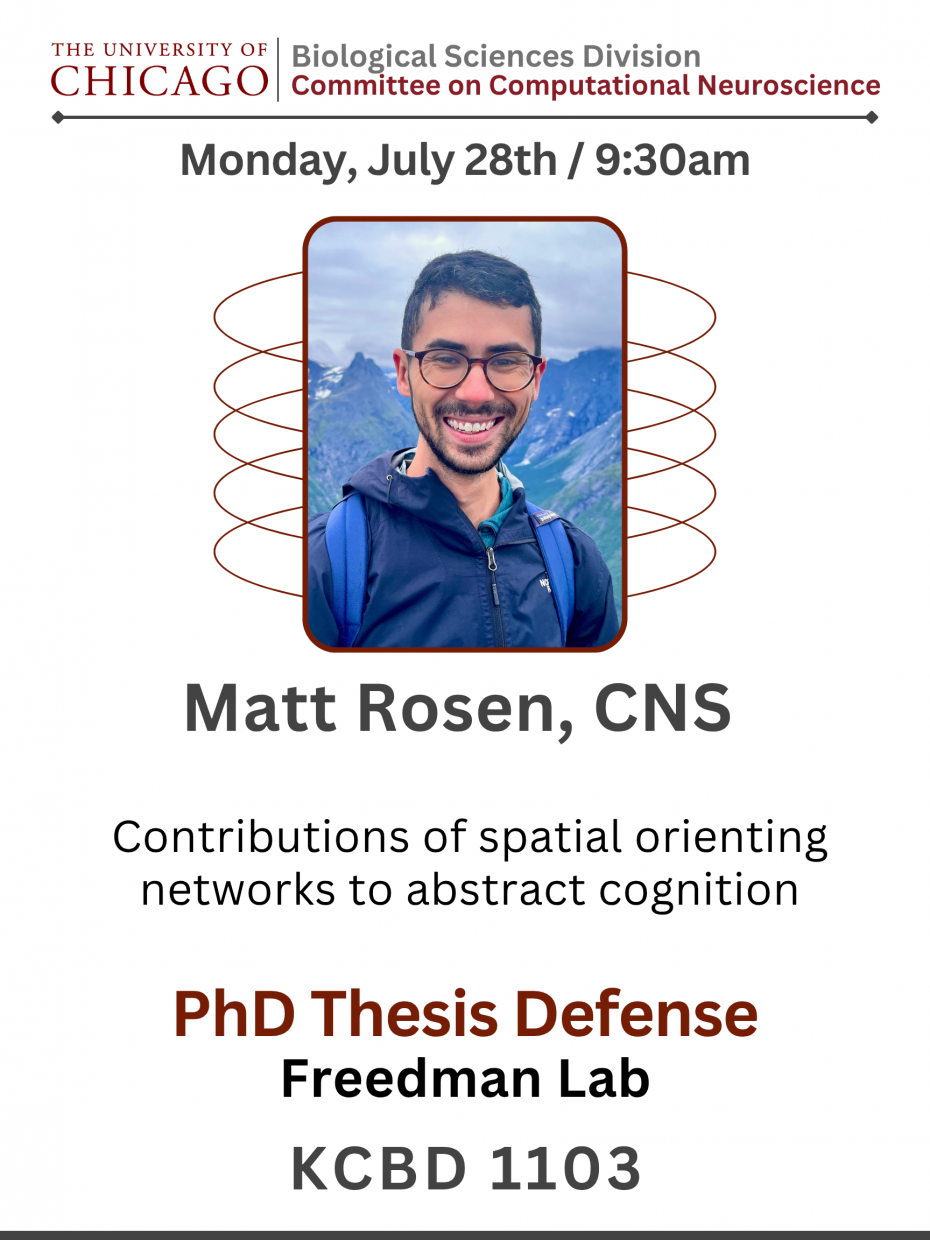
July 28th, 2025 | 9:30 a.m.
KCBD 1103
Chicago, IL 60637
United States
PhD Thesis Defense
Monday, July 28th, 9:30 am
Matt Rosen, CNS
Freedman Lab
KCBD 1103
“Contributions of spatial orienting networks to abstract cognition”